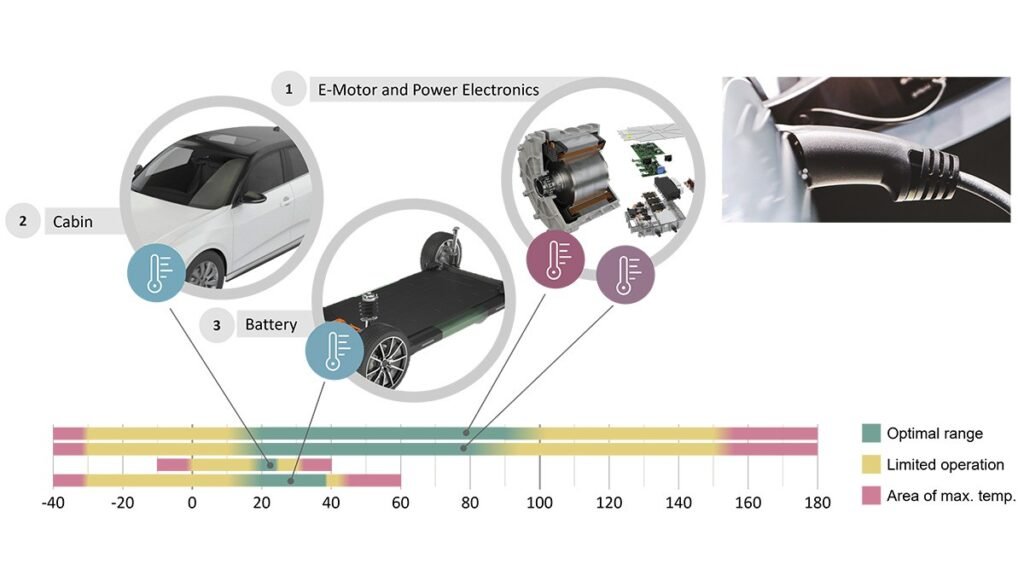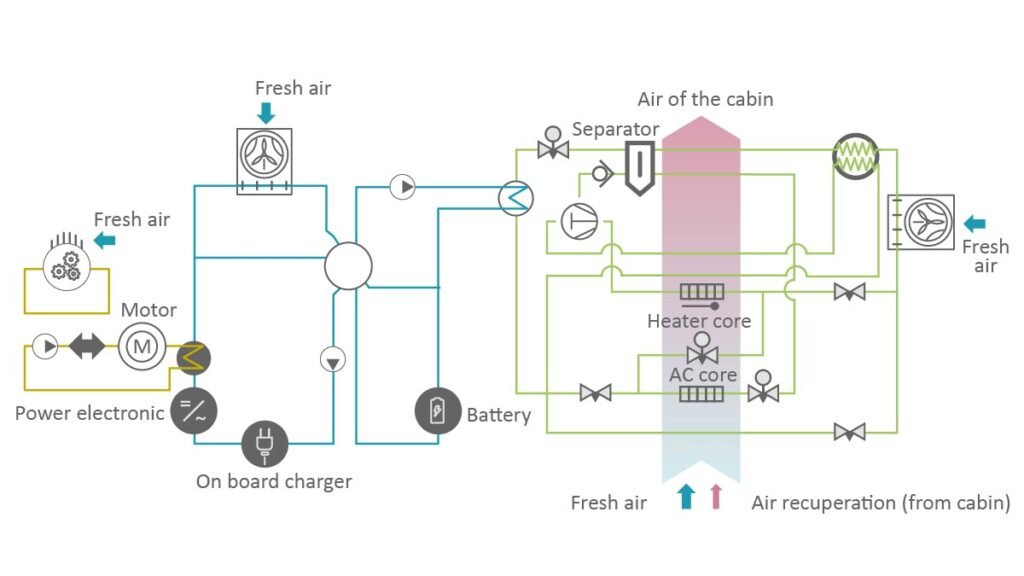Electric vehicle thermal management has seen significant advancements in recent years, leading to more efficient and reliable electric vehicles. With the increasing popularity of electric cars, the focus on managing and optimizing their thermal systems has become crucial. Understanding the importance of proper thermal management and the innovations driving this field is key to unlocking the full potential of electric vehicles. From improved battery cooling systems to advanced heat pump technology, this article explores the exciting developments in electric vehicle thermal management and their impact on the overall performance and longevity of electric vehicles.
Liquid Cooling Systems
Benefits of liquid cooling
Liquid cooling systems are becoming increasingly popular in electric vehicles due to their numerous benefits. One of the key advantages is their ability to efficiently dissipate heat from the vehicle’s components, such as the battery and electric motor. Compared to air cooling systems, liquid cooling can provide better thermal management, ensuring optimal operating conditions and extending the lifespan of these critical components.
Liquid cooling also offers a higher heat capacity, which means it can absorb and carry away more heat compared to air cooling. This is especially important in high-power electric vehicles where heat generation is substantial. By effectively managing temperatures, liquid cooling can prevent overheating, maintain optimal performance, and improve the overall efficiency of the vehicle.
Furthermore, liquid cooling systems contribute to a quieter and more comfortable driving experience. Unlike air cooling systems that rely on fans to circulate air, liquid cooling systems operate silently. This not only reduces noise pollution but also eliminates the possibility of fan failure, which can lead to overheating and component damage.
Components of liquid cooling systems
Liquid cooling systems consist of several key components that work together to regulate and dissipate heat. These components include:
-
Heat exchanger: The heat exchanger is responsible for transferring heat from the components to the cooling medium, typically a liquid coolant. It consists of a network of tubes or fins that facilitate the exchange of heat.
-
Pump: The pump circulates the coolant through the system, ensuring a continuous flow and efficient heat transfer. It is typically an electric pump that is powered by the vehicle’s electrical system.
-
Coolant: The coolant is a specially formulated liquid that absorbs and carries away heat from the components. It must have excellent thermal properties and be able to withstand the operating conditions of the electric vehicle.
-
Radiator: The radiator acts as a heat sink, dissipating the heat absorbed by the coolant. It is usually positioned at the front of the vehicle to take advantage of ambient airflow.
Examples of liquid cooling systems
Several automakers have embraced liquid cooling systems in their electric vehicles to enhance thermal management. One notable example is Tesla, which utilizes a liquid cooling system for its high-performance models like the Model S and Model X. These systems effectively maintain the battery and electric motor at optimal temperatures, allowing for sustained high-performance driving and faster charging.
Another example is the Porsche Taycan, which employs a liquid cooling system to manage the temperature of its advanced battery pack. This ensures consistent power delivery and extends the lifespan of the battery, providing drivers with a reliable and efficient electric driving experience.

This image is property of www.schaeffler.com.
Air Cooling Systems
Benefits of air cooling
While liquid cooling systems offer excellent thermal management capabilities, air cooling systems still have their advantages. One of the primary benefits of air cooling is its simplicity and lower cost compared to liquid cooling. Air cooling systems do not require complex pumps, radiators, or coolants, making them more affordable and easier to maintain.
Another advantage of air cooling is its reliability. Unlike liquid cooling systems that involve potential leakages or pump failures, air cooling systems have fewer components that can malfunction. This simplicity and robustness make air cooling systems ideal for electric vehicles with less demanding power requirements or in situations where cost-effectiveness is a priority.
Furthermore, air cooling systems do not require additional infrastructure or specialized equipment for maintenance or repair. They rely on natural convection or forced airflow facilitated by fans to dissipate heat. This makes them more accessible and easier to service, reducing downtime and minimizing maintenance costs.
Components of air cooling systems
Air cooling systems are straightforward in design and consist of the following components:
-
Heat sink: The heat sink is a passive component that absorbs heat from the electric vehicle’s components. It is typically made of metal, such as aluminum, which has excellent thermal conductivity.
-
Fan: The fan provides airflow over the heat sink, facilitating heat dissipation. It can be a simple axial fan or a more advanced centrifugal fan, depending on the cooling requirements of the vehicle.
-
Ventilation system: The ventilation system consists of air ducts or vents that direct airflow to the heat sink and expel hot air from the vehicle. It ensures efficient airflow and prevents the buildup of heat inside the vehicle.
Examples of air cooling systems
Air cooling systems are commonly found in electric vehicles with lower power requirements or in situations where cost-effectiveness is prioritized over advanced thermal management. One prominent example is the Nissan Leaf, which utilizes an air cooling system for its battery pack. This allows for a more affordable electric vehicle option while still providing adequate thermal management for everyday driving conditions.
Another example is the Chevrolet Bolt EV, which employs an air cooling system for its battery pack and electric motor. Since the Bolt EV is designed as a more affordable electric vehicle with a lower power output, air cooling provides a cost-effective solution for maintaining optimal operating temperatures.
In conclusion, both liquid cooling and air cooling systems have their advantages in electric vehicle thermal management. Liquid cooling systems offer superior heat dissipation and temperature control, while air cooling systems provide simplicity, reliability, and cost-effectiveness for less demanding applications. The choice between these systems depends on the specific requirements and priorities of the electric vehicle manufacturer.

This image is property of www.schaeffler.com.

